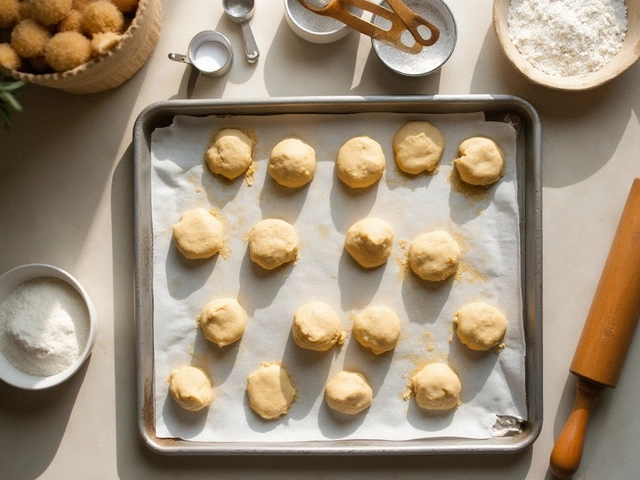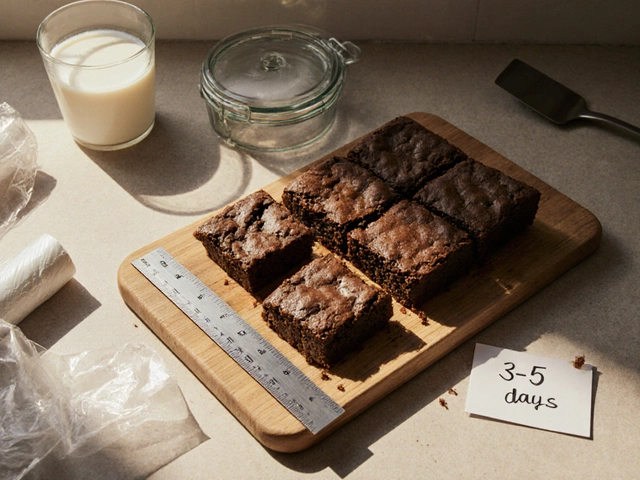Croissants – Easy Tips, Recipes & Quick History
If you’ve ever bitten into a flaky, buttery croissant and wondered how it got that perfect lift, you’re not alone. The good news is you don’t need a fancy bakery school to make them. With a few basic steps and a bit of patience, you can pull off that classic French pastry right in your kitchen.
First thing’s first: the dough. Croissant dough is a type of laminated dough, which means you fold butter into the dough multiple times to create layers. Think of it like making a simple bread dough, then adding a thick slab of cold butter, folding, rolling, and repeating. The key is keeping everything cold. If the butter melts into the dough, you’ll lose those airy layers and end up with a dense roll instead of a light, airy croissant.
Step‑by‑Step Basics
1. Mix the dough. Combine flour, sugar, salt, yeast, milk, and a little melted butter. Knead until smooth, then let it rest in the fridge for about an hour.
2. Prepare the butter block. Place a sheet of parchment between two pieces of plastic wrap. Flatten cold butter into a 6×6‑inch square. Keep it chilled.
3. Laminate. Roll the dough into a rectangle about twice the size of your butter block. Place the butter on half the dough, fold the other half over, and seal the edges. Roll out gently, then fold into thirds (like a letter). That’s one turn. Chill for 30 minutes, then repeat the roll‑fold process two more times for a total of three turns.
4. Shape the croissants. After the final chill, roll the dough to about ¼‑inch thickness. Cut triangles, then roll from the wide end to the tip. Curve the ends toward each other to form the classic crescent shape.
5. Proof and bake. Let the shaped croissants rise at room temperature until they look puffy—usually 1‑2 hours. Brush with egg wash for a glossy finish, then bake at 400°F (200°C) for 15‑20 minutes until golden brown.
Quick History Bite
Despite their French reputation, croissants have roots that stretch back to Austria. Legend says bakers in Vienna created a crescent‑shaped pastry in the 1600s to celebrate a victory over the Ottoman Empire. When the pastry made its way to France, French bakers refined it, adding the buttery lamination we know today. The result? A pastry that’s both a nod to history and a delicious breakfast staple.
Now that you know the basics, experiment with fillings. Chocolate, almond paste, or ham and cheese can turn a plain croissant into a snack or a meal. Just add the filling before the final roll, or place a small dollop on top before baking.
Remember, croissant making is a bit of an art and a bit of a science. If your first batch isn’t perfect, don’t sweat it. Adjust the butter temperature, give the dough enough chill time, and watch the layers puff up in the oven. With practice, you’ll get that flaky, buttery bite that makes you feel like you’re strolling down a Parisian boulevard.
So grab some flour, chase that buttery flavor, and start rolling. Your kitchen just got a little more French.

Are Croissants Vegan? Unraveling the Mystery Behind This Flaky Delight
Croissants, renowned for their buttery flakiness, often leave vegans wondering if they can enjoy this popular pastry. Typically made with butter and milk, traditional recipes do not cater to a vegan diet, yet there's hope. Plant-based alternatives such as vegan butter and non-dairy milk can render croissants vegan without compromising on taste or texture. Discover how you can indulge in a vegan version of this beloved baked good.
View More




